|
*We're all "jollers" when we're having fun and enjoying life[1] Above: Perhaps a little less imposing than Siena's Piazza del Campo and its ongoing Palio horse race, San Sebastián's Plaza de la Constitución dates from 1817 and in its early days hosted bull fights but is now home to cafés serving, inter alia, pintxos (more of this later). If one peers closely at the balconies it is possible to see a numbering system played out above each door on all three sides (the horseshoe continues around to the left). We were told the numbering was so that bull-fighting fans[2] could rent a balcony to watch the "sport" below. Did anyone ever tell you that San Sebastián has the second highest number of Michelin stars in the world? We didn't visit any of them. Instead we pretty much focussed on pintxos (a.k.a. tapas) and an evening meal in the restaurant at our campsite. Thing is, the campsite was a little haven up in the hills above the city with just one setback - the only sensible way to get from it to the urban delights below was to avail ourselves of the free shuttle that took campers down the hill at 9, 10 and 11 am and back up again at 5, 6 and 7 pm. I guess we could've taken our own van but anyone who's navigated the complex plate of spaghetti that is the system of motorway interchanges that welcome a weary traveller to Donostia-San Sebastián (and seemingly the rest of North Western Spain) will gratefully accept the services of said shuttle. Apart from anything else, if Pintxos is what you're after, you're hardly going to drive home up the extremely labyrinthine and narrow roads into the hills after a skinful of delicious "local" wine. With a pretty decent small glass of Rioja or Ribera del Duero reserva topping out at around €4, and pukka sangria in abundance, and given the density of bars in San Sebastián's Old Town (Parte Vieja) and Gros, multiple establishments are all but compulsory. There are those who reckon that the de rigeur is one small glass of wine and one pintxo (small by definition) before moving on to the next bar. Apparently, some of the more hardened locals traditionally had up to 10 of these in an evening's pub crawl. Although I doubt they'd have used such a vulgar term for their perorations. Suffice to say that a lunch that starts at around 2PM and continues across a succession of bars would not be a great idea if one had to drive home afterwards. From previous experience in Spain, locals themselves do not slip from lunch into supper without some sort of siesta, even if it's just a bit of quiet down time between sessions. For them, play resumes at around 10PM and continues until heaven knows when. L'étranger (the outsider/el extraño/arrotza) might attempt to bridge that gap by ploughing on. I suppose it might be theoretically possible to stay the pace from 2PM to 9AM the next morning and the campsite shuttle "home". In my case this would end in almost certain death. Above: La Parte Vieja (the Old Town) still a way to go in the middle ground with our first destination in the Gros still another kilometre-and-a-half beyond that. Pintxos (should it be Pintxoak?[3]) What we were about to enjoy are more generally described in other parts of Spain as tapas. In the Basque Country the individual snacks can be incredibly imaginative and are known as Pintxoak. I am led to believe that the original term came from the Basque name for what we might call a cocktail stick. So, basically, each pintxo (pronounced something like "pincho" for Gringos) had to fit on to a toothpick, although this seems more recently to have been adjusted to "no bigger in size than a fist". I have to confess that I was on a mission to visit the "Pincho" bars of San Sebastián. I am not suggesting my companions were reluctant participants but perhaps they didn't share my obsession. After all, I had dragged them five-and-a-half kilometres on foot from the shuttle drop off at the foot of the Igara Bidea to the fag-end of the Gros to partake at a specific pintxo bar. The Gros being an urban district of Donostia (San Sebastián's other name) where the city runs out of road. As is the case with culinary culture anywhere in the world, it is often the emerging areas that are at the leading edge of foodie trends, while the older (apparently more attractive) parts rest on their laurels. I had done my research and, in my head anyway, had plans to start at the furthest point and work our way back to the shuttle stop (yes another 5.5 km) taking in perhaps half a dozen pintxoak bars with a small glass of wine and one pintxo at each venue before moving on to the next. This was de rigeur, I believed, but, as it turns out, de trop for my lovely companions. The Bergara Bar was to be the first stop on our barra arakatzea[4]. My mind had scheduled La Vina back in the old town to be our last oasis before the long trek back to the shuttle. As we were nearing the Bergara I sensed a hint of resistance to our two days in San Sebastián becoming one long bar crawl. "It's a gorgeous city, when do we get to see the rest of it?" started to become a recalcitrant refrain. It was a reasonable enough question and one that kind of gelled when the charming waiter allocated us a prime (seated) spot outside the Bergara. We watched the local cognoscenti/ezagutzaile drift in and out for their obligatory 1:1 glass:pintxo and that became entertainment in itself. Besides, the food was pretty spectacular and adventurous, too. So I'm afraid we behaved in a completely uncouth manner and remained there for at least 3 glasses and definitely more than 3x3 delicious pintxoak. Below: (top row, l to r) armed with a rather splendid sangria each, some of our party were ready to settle in; our friendly waiter attempting to sneak up unobtrusively; and then the full charm offensive, although I did slightly wonder about the hand gesture; (second row) a cornucopia of pre-prepared pintxoak; (third row, l to r) the first three were samples of made to order pintxoak from seafood to a mini burger and the last did not come from Bergara and is a fabled slice of burnt cheesecake. Above, (bottom row l-r) on our way back from the Bergara Bar, Kerry was impressed by the catch of the day in the river separating the Gros from the old town - I suspect the fisherman was flattered by the knowledgable attention, too, Kinks having represented South Africa internationally; the fabled La Viña Bar & Restaurant in the Old Town and its Cocina de Carmen Jiménez; always packed. I was determined that our final pintxo of the day would be a dessert. More specifically a "burnt cheesecake" from a specific bar. My companions were unimpressed and wouldn't join me in shouldering my way to the counter at La Viña. Then Shan's curiosity got the better of her (it always does) and she came in for a peek. Another spoon was produced ... and then another for Kinks. I was a bit saddened at my diminished portion but also secretly felt vindicated. So much so that one of the first things I did when I arrived home was track down a recipe courtesy of Marti Buckley[5] and the home-cooked version was a roaring success. A wider perspective Above: a broader perspective from the top of Monte Igueldo on the Western side of the Bahía de la Concha, looking over the Isla de Santa Clara at the Parte Vieja and the Gros behind. On the left, alongside the old town, is Monte Urgull, which we will climb later. The twin beaches of Ondarreta and la Concha stretch away to the right, the Miramar Palace just visible in the trees behind the rocky outcrop that separates them On our second day in San Sebastián we were again delivered (a bit earlier this time) to the bottom of the Igara Bidea. An ongoing bus was mooted but I am glad we decided to walk to the bottom of the funicular that has been plying its way up Monte Igueldo for more than 100 years. This gave us a chance to take in the burgeoning modern university quarter of the city. Spain has become a pioneer of modern design from Antoni Gaudi's revolutionary creations in Catalunya a century ago to Frank Gehry's far more recent Guggenheim in Bilbao in the Basque Country. Donostia-San Sebastián is no slouch and is littered with modern buildings, some of them huge and proud and many of them directed at higher learning and the arts. So we were strolling down Tolosa Hiribidea admiring the modern facilities for tertiary education and I was taken back to my own days as a student in Durban, South Africa when Anti-Apartheid was high on our agenda. Lo-and-behold, not a lot had changed, apart from the fact that I couldn't understand the posters. I became a little obsessed with one of them, see below, and struggled with the translation, being written in the Basque language. Across the boulevard was the Musikene building, housing the Higher School of Music of the Basque Country, that certainly demands the stroller's attention. Above: (top) the Musikene building, bedecked in black and gold; (bottom, l to r) the poster here, roughly translated[5] from the Basque language, reads "Youth independence, October 12, Anti-Hispanic day"; the bottom station of the more than 100-year-old funicular- interesting to note the similar shades in the gold of the modern building and the stone of the early 20th century one. Yes, today was October 12 and many locals were soaking up the atmosphere of the public holiday. Possibly even the students if our own anti-Apartheid protests in the sunshine were anything to go by. Returning to our stroll and our assignation with the funicular: two wooden carriages transport visitors up a cog railway from sea level to somewhere short of the 180 m summit. There is a permanent fair there and a rather stodgy Mercure Hotel that redeems itself a bit with a more plebeian coffee bar and terrace that is open to all-comers. By far the best thing about the top of the mountain is the view back over San Sebastián and its Bahía la Concha/Kontxa. Upon our descent, my legs were taking strain so I elected to circumnavigate the bay by walking along the promenade. Shan had other ideas: "Kinks and I decided to walk the entire length of both beaches to old town. "After that we had pinchos and sangria in Constitution square with the delightful Mohamed as our waiter. "Then we walk up millions of steps and slanty slopes to look at Jesus before heading back down to the aquarium. It’s Spanish Day so all the Spaniards are out and walking around the promenade" Above, clockwise from top left: Having dipped her feet in the Med in Collioure, Kinks dips her hands in the unseasonably warm Atlantic; the pavilions viewed from the beach took us back to the fading Victorian promenades of the Durban beaches of our youth; a view of our post-prandial challenge, scaling Monte Urgull; but first the intrepid beach walkers required feeding and watering. The pintxoak in the Plaza de la Constitución had to be tried but were not much of a match for the more casual bars in the back lanes. A couple of decent potato omelettes did fortify us for the ascent of Monte Urgull, however, where the views were again splendid, this time gazing from East to West. We half-heartedly contemplated returning to our shuttle "terminus" by bus but we were tired and it seemed complicated so we limped back to the shuttle at 6PM and met our driver with gratitude. We'd had a thoroughly grand day but our tanks were empty. Luckily the fridge in our van back at Camping Igara was well stocked with before dinner wine/antes de la cena/afaldu aurretik. We had a competent paella in the restaurant and had to try the hilltop version of burnt cheesecake - not a bad attempt but rather over-embellished with dense whipped cream and a caramel sauce. Above, l to r: Shan got to look at Jesus planted, as he was, atop the medieval fort; Kinks figured the castle and Jesus needed a bit more protection. Above: Just had to square the circle on Bahía de la Concha. Above: Donostia-San Sebastián really is quite photogenic so I won't make excuses for being shutter happy. 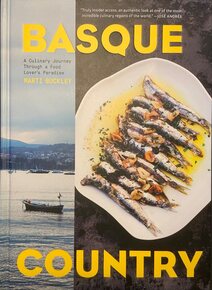 [5]Afterword/Acknowledgement There are a couple of recently acquired Twitter friends without whom we'd have been grappling in the dark with this one. Initially there was Clive Wood (@Woody2402) who gave me the pointers to the Gros et al. He then introduced me to Marti Buckley (@martibk) and her wonderful book (alongside). Apart from enabling me to create my own La Viña Cheesecake, I was also introduced to assorted pintxoak, Lamb in Chilindrón Sauce and an authentic Basque Sangria (Zurrakapotea). These and other delights will be repeated on our Christmas menu and for many happy years to come. The other thing that Marti did for me was unlock a couple of mysteries of the Basque language without which I would still be struggling with any attempt at simple translation. Clive seems to hide his light under a bushel but his enthusiasm spills over into wine, Basque cuisine and recommending excellent books. Above: Alright, alright ... just one last snap to highlight the fact that this port city is surrounded by mountains - much as the Catalan Pyrénées-Orientales are omnipresent near the French-Spanish border on the Mediterranean, so are the Basque Pyrénées-Atlantiques on the Spanish-French border on the Atlantic.
And so it was, the following morning, we were to bid farewell to the delightful Isa and her Camping Igara and prepare to do battle, in reverse, with Spaghetti Junction (see intro). The end of the blog might seem a strange place for a description of our arrival at the campsite but the confused construction reflects a day of a long drive before becoming lost in the tiniest of narrow roads and wondering if we'd ever reach our destination. The Mercedes satnav became officially useless and it was a huge relief to almost happen upon our final destination. Not the least because Isa greeted us with a smile on her face and a prime slot for our van. She explained the shuttle service into town then introduced us to the restaurant. There we ordered spicy chicken legs for later (dinner in Spain is always at a civilised later hour that most of the world), giving us time for a relaxing glass of wine in the fading evening light over the surrounding hills and mountains. The spicy legs turned out to be delicious and more than plentiful and required more wine to wash them down. We were all set for the following two days of taking in the delights of San Sebastián without having to fire up our own vehicle even once. Now we were leaving and headed towards Hondarribia (sometimes known by its Spanish name of Fuenterrabía) and France. It was time to return our Marco Polo van to its rightful owners in Bordeaux. Our adventure had been all too short. There was only one thing for it, an encore across the Northern swathe of Iberia. How does six weeks in 2023 sound? Coming next
[Endnotes]:
0 Comments
Leave a Reply. |
AuthorMark Harrison - making travelling an adventure Archives
April 2024
Categories |
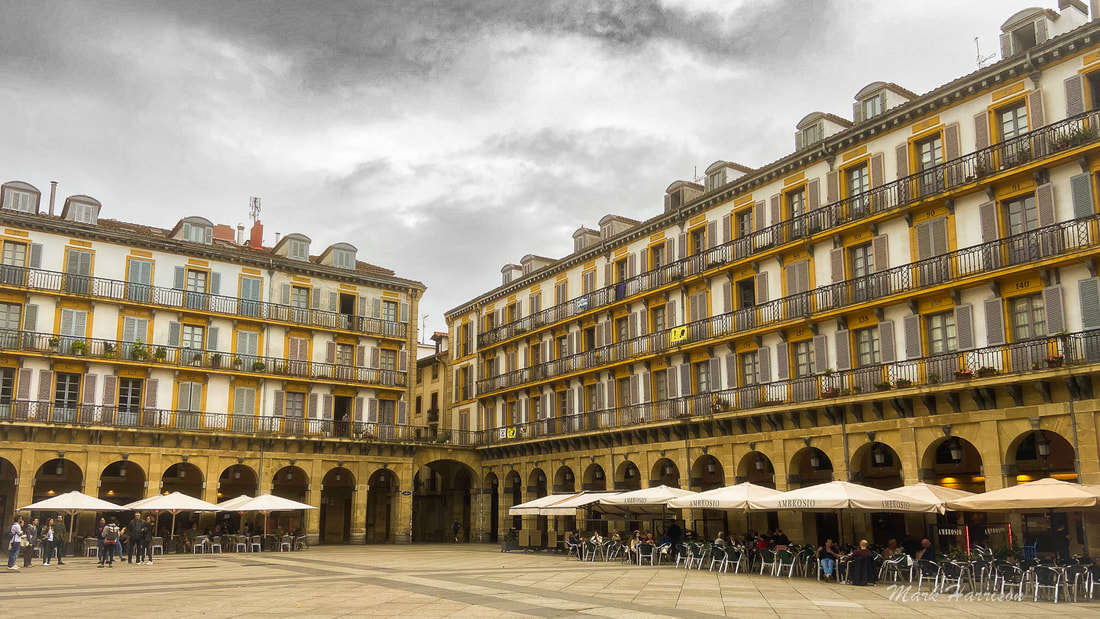
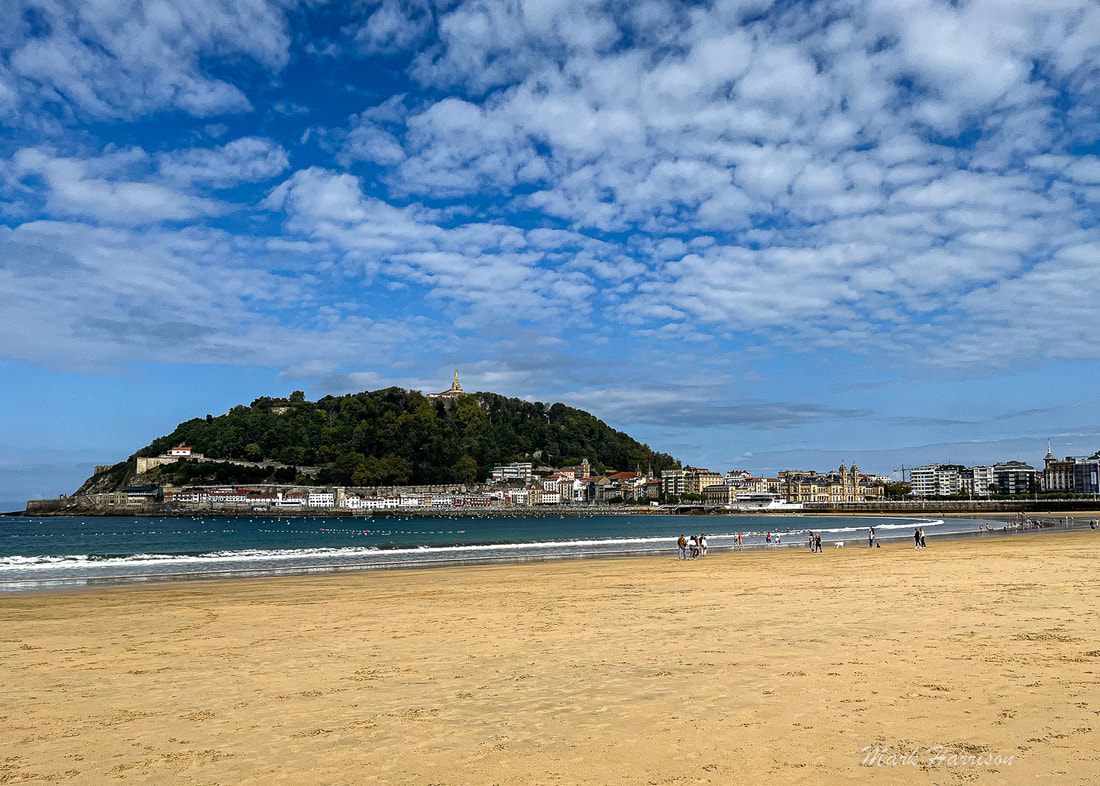
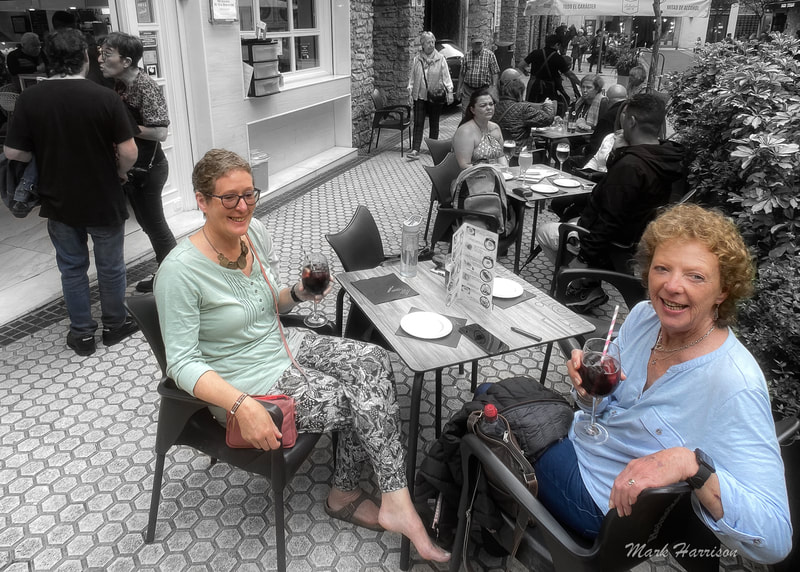
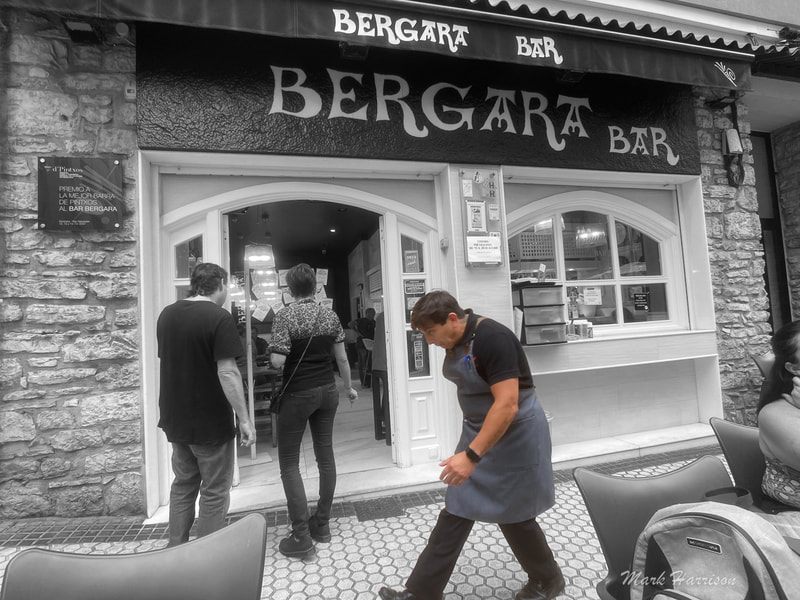
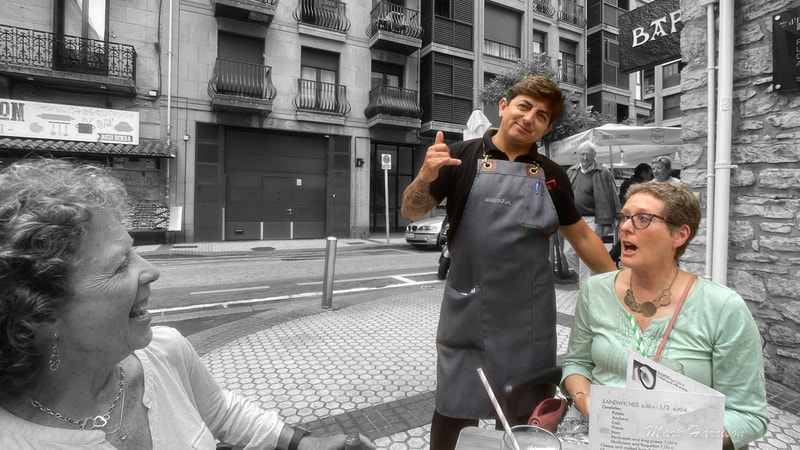
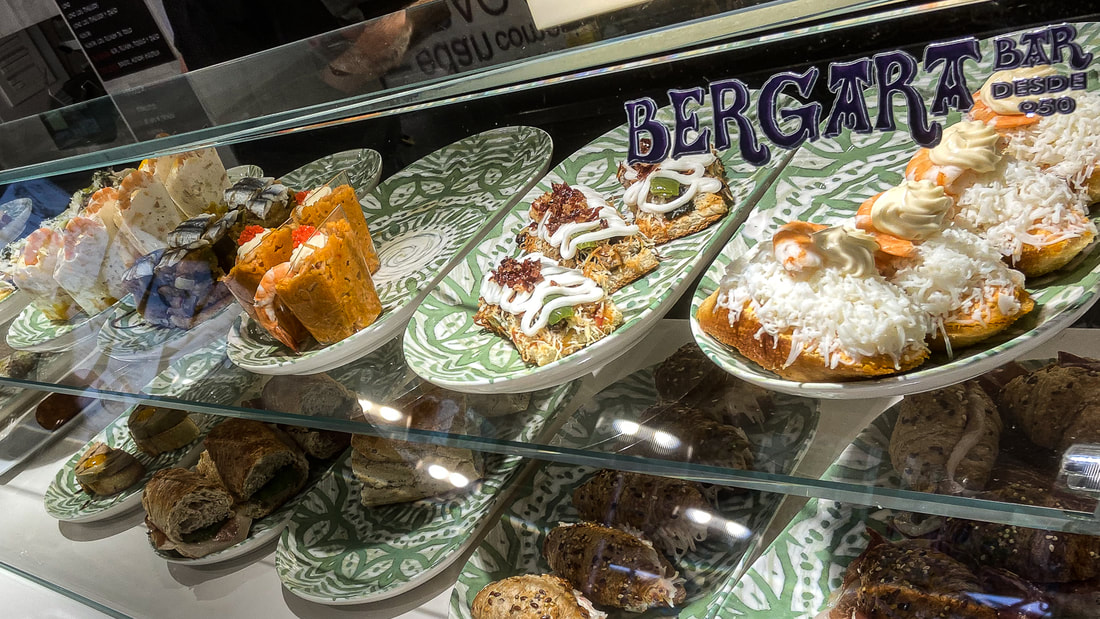
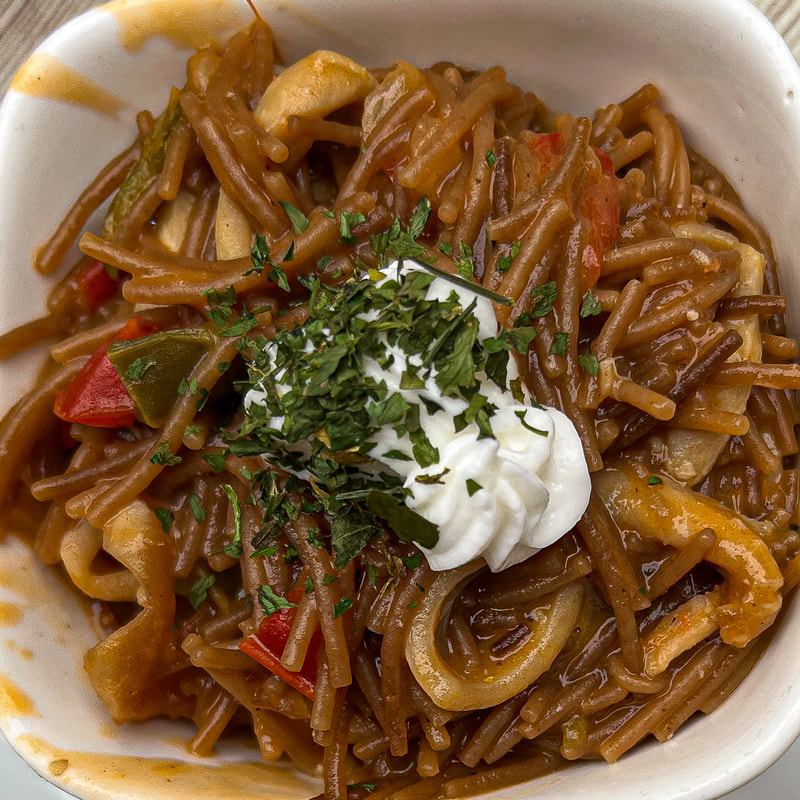
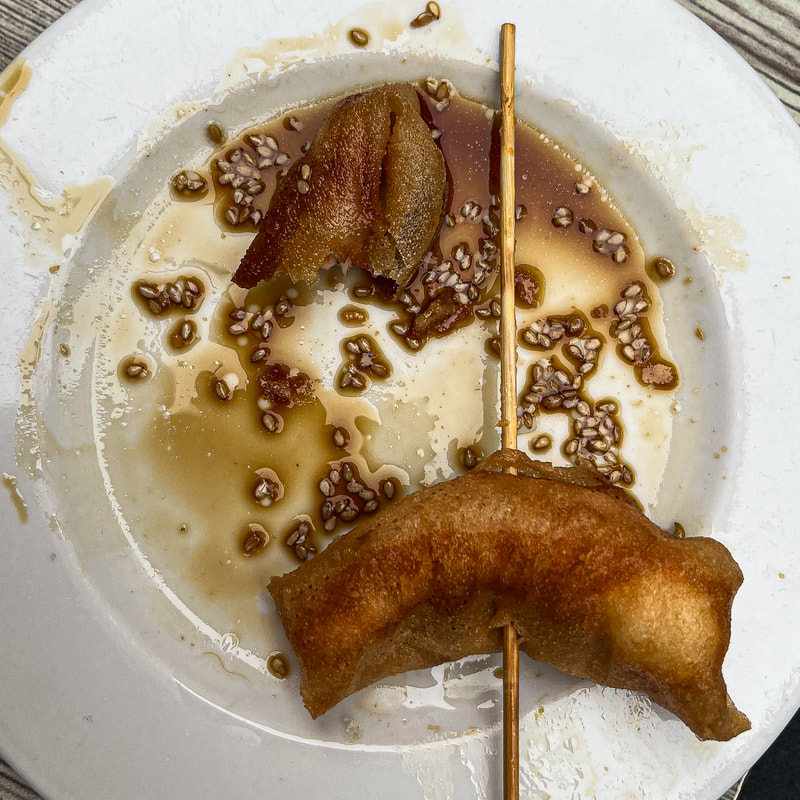
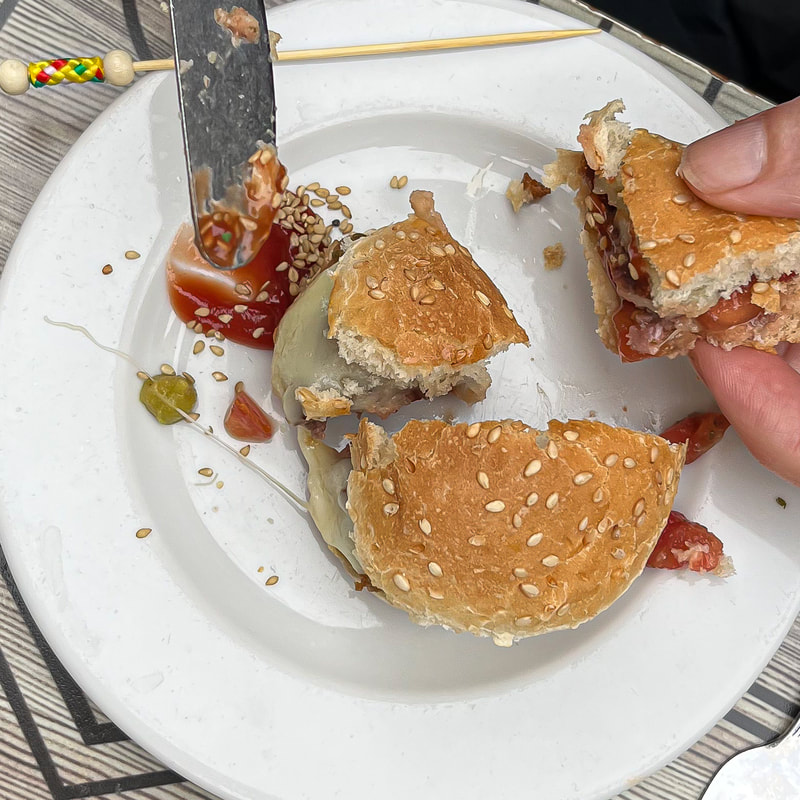
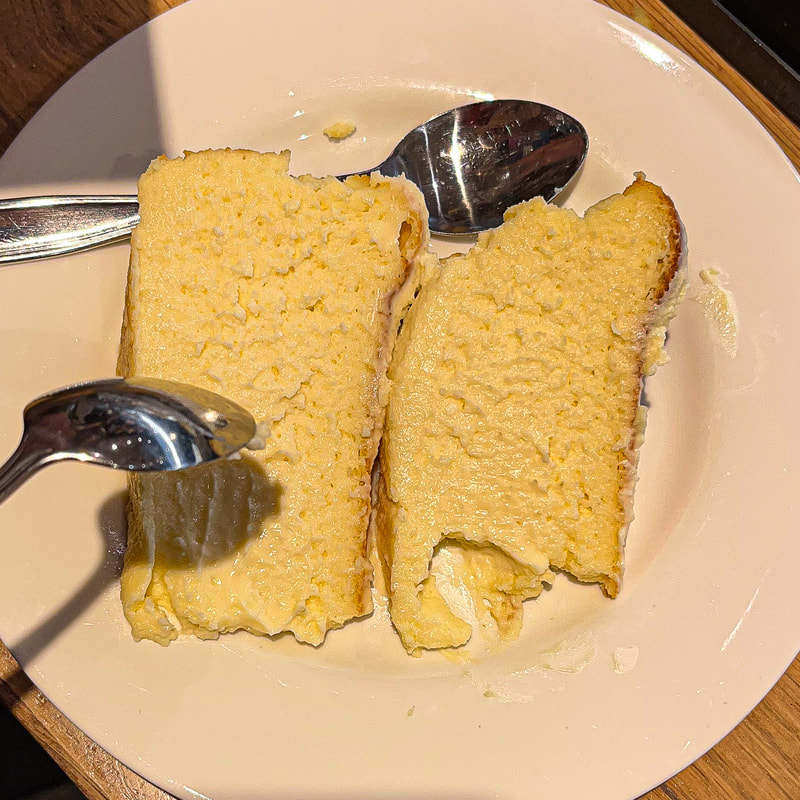
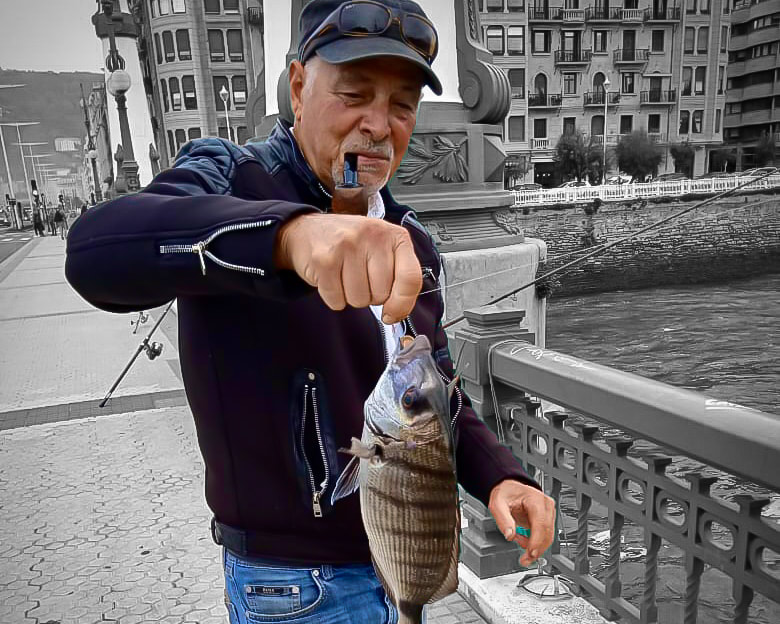
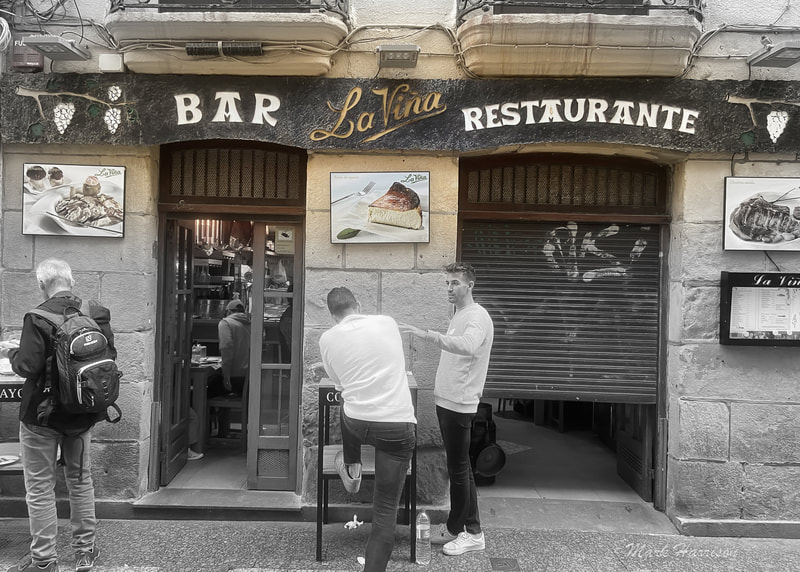
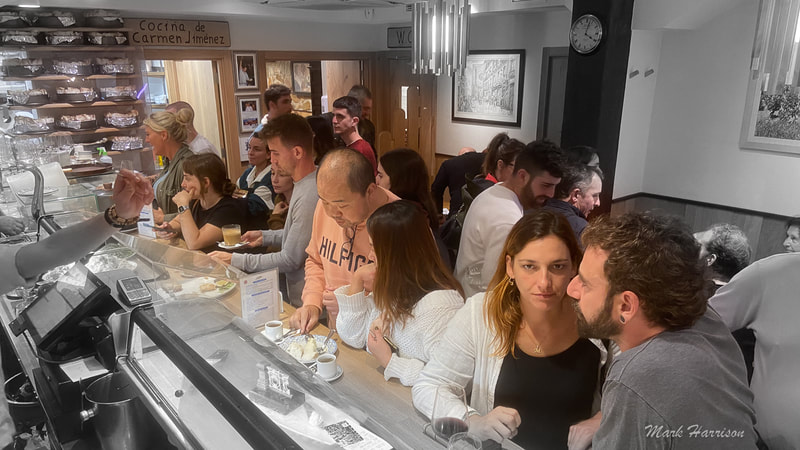
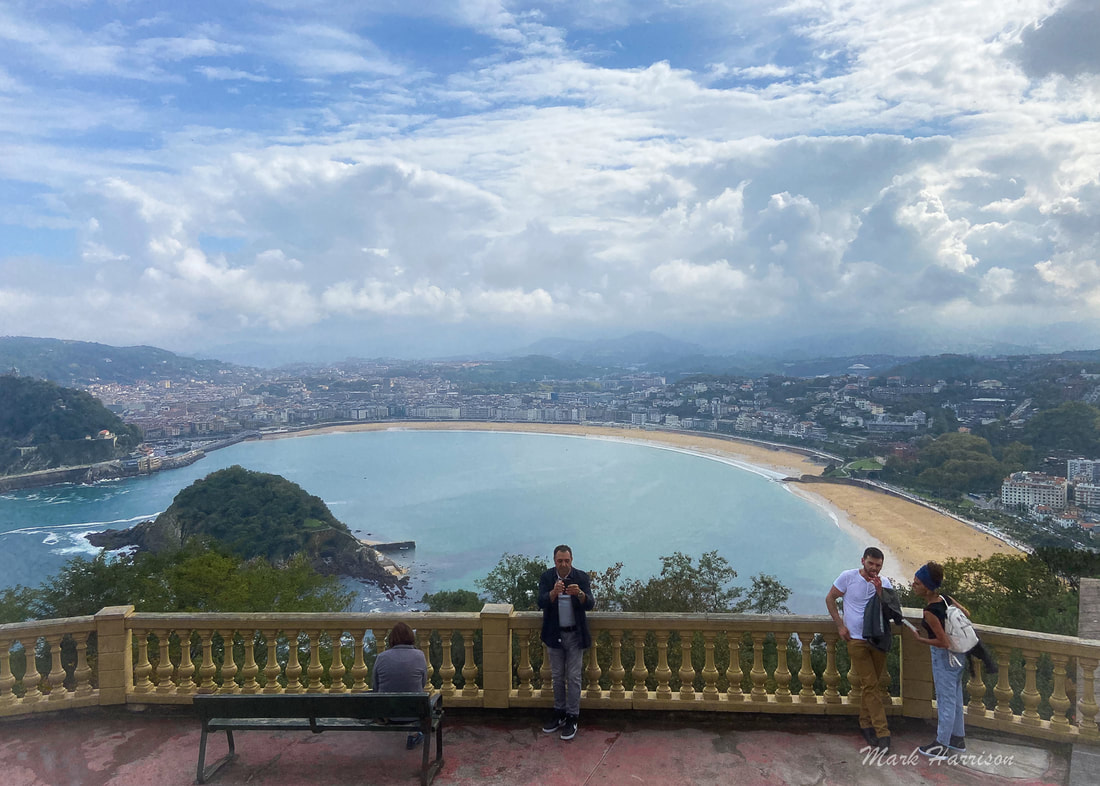
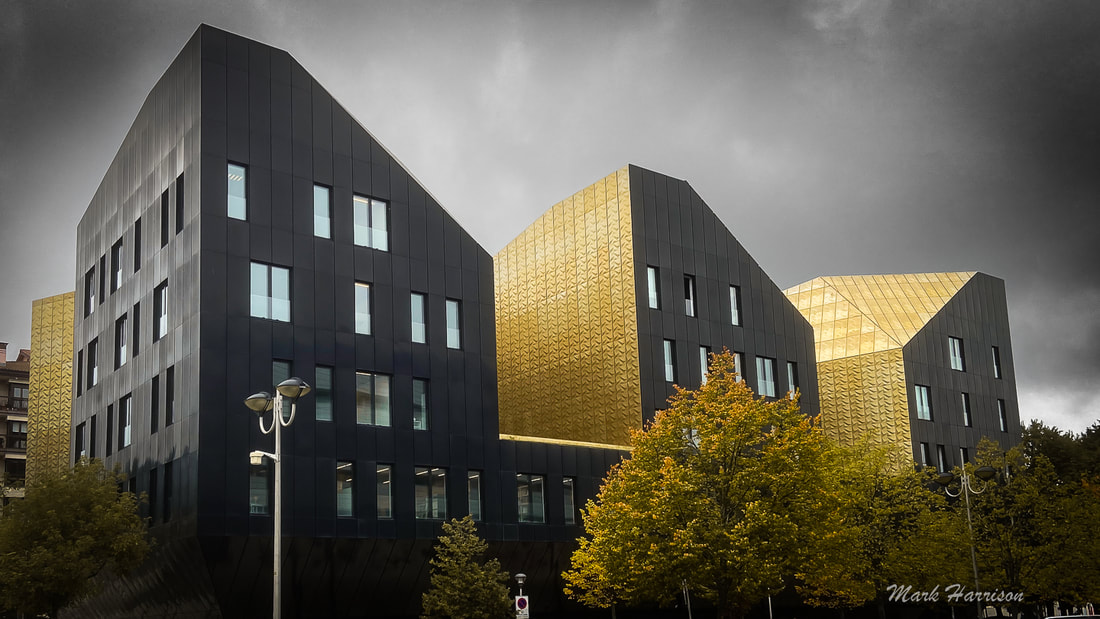
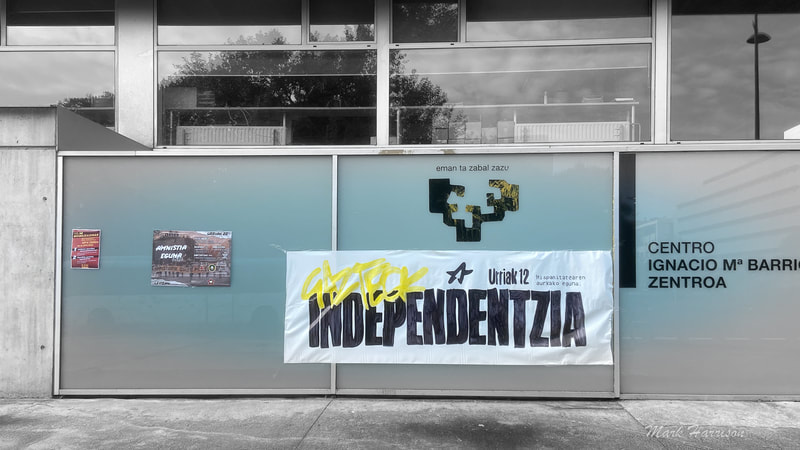
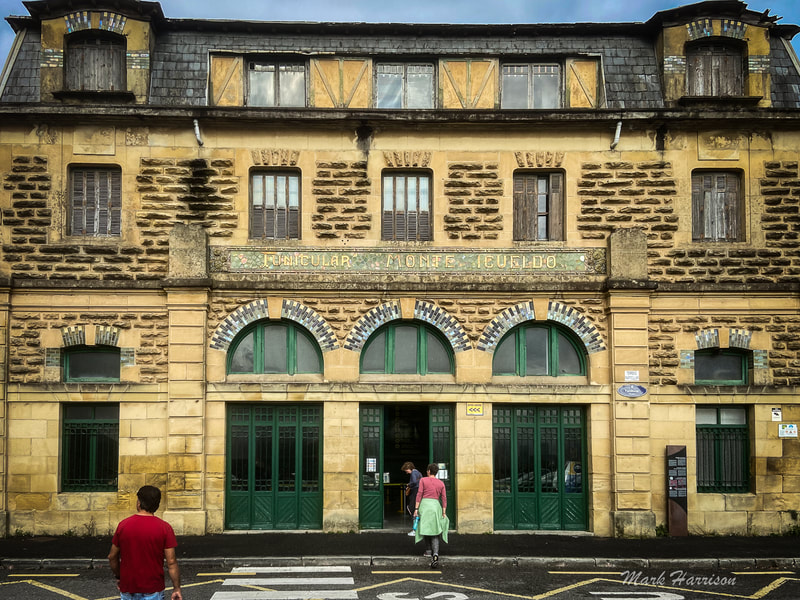
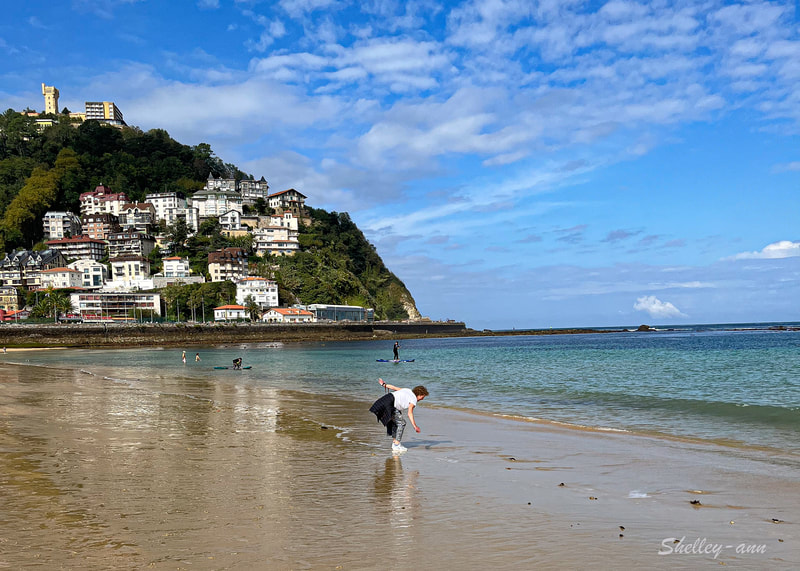
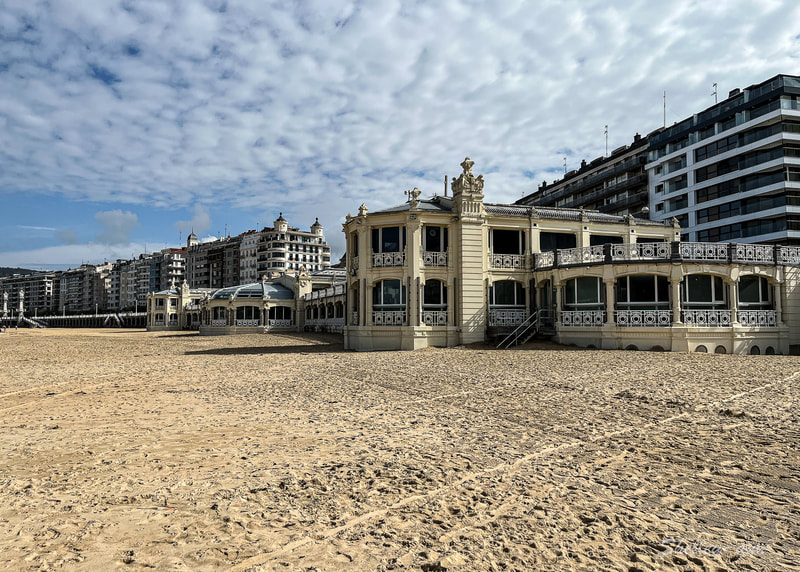
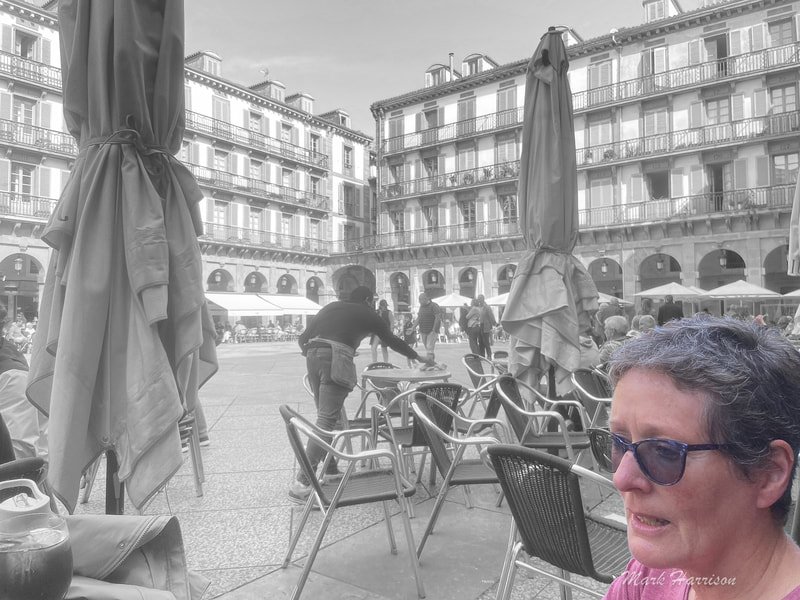
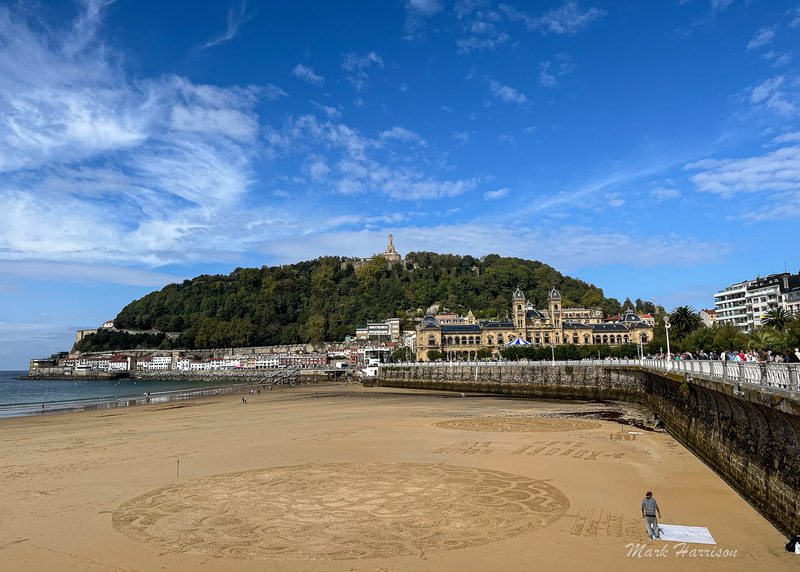
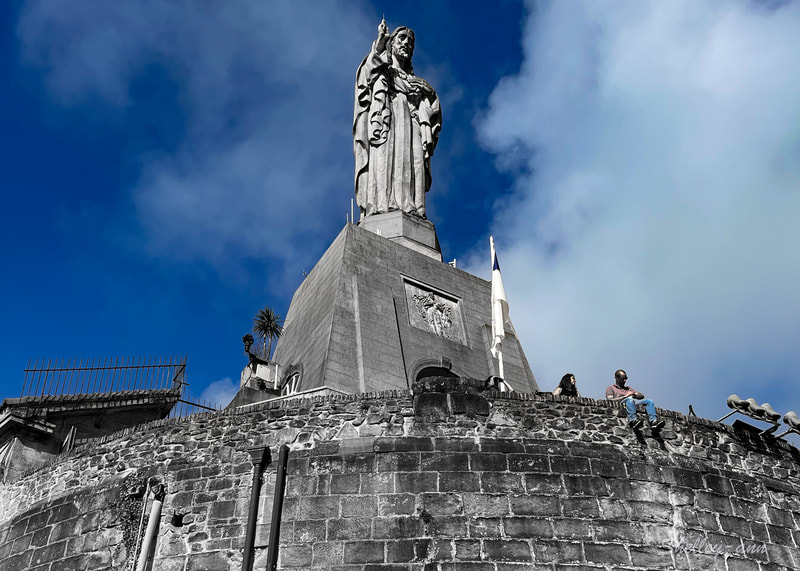
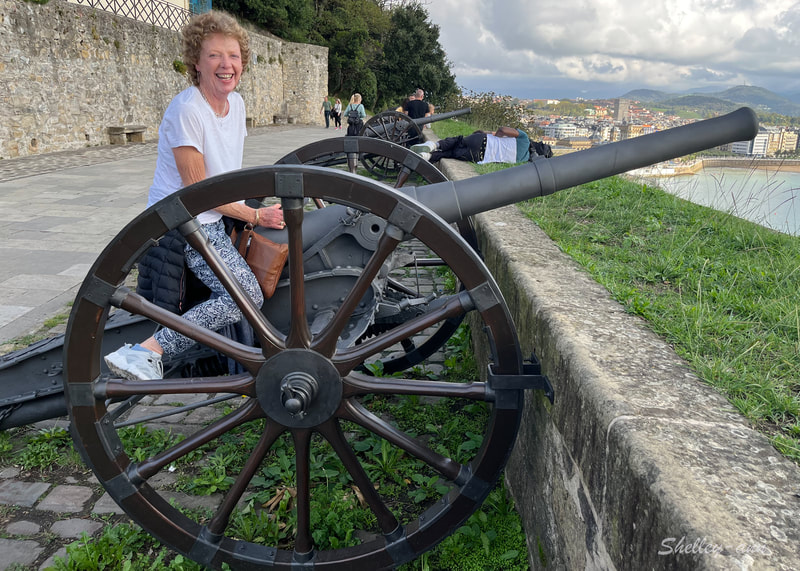
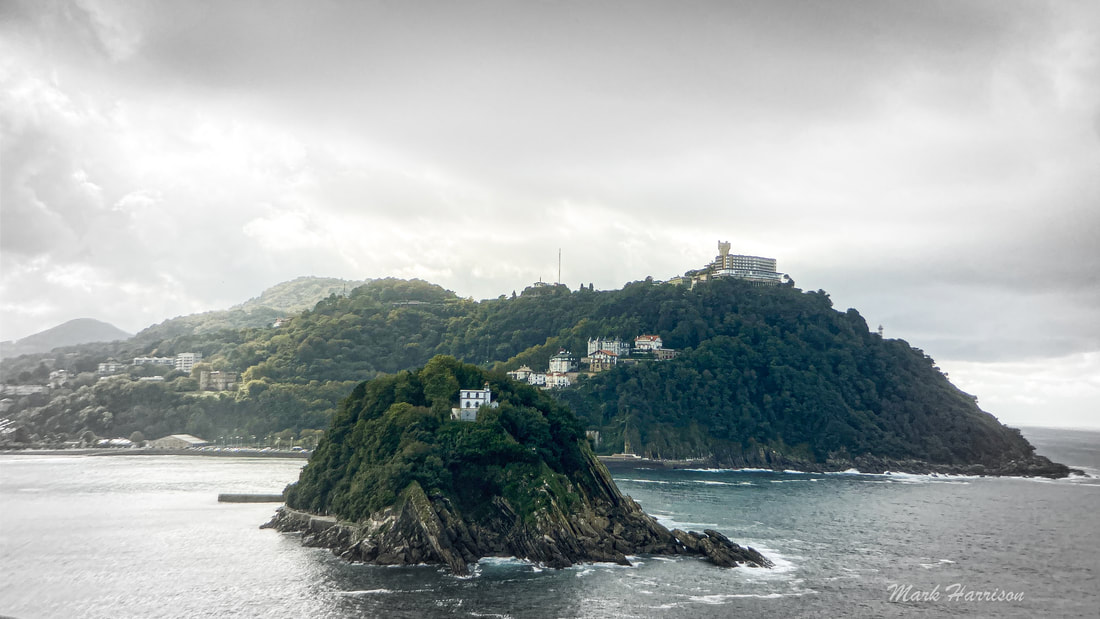
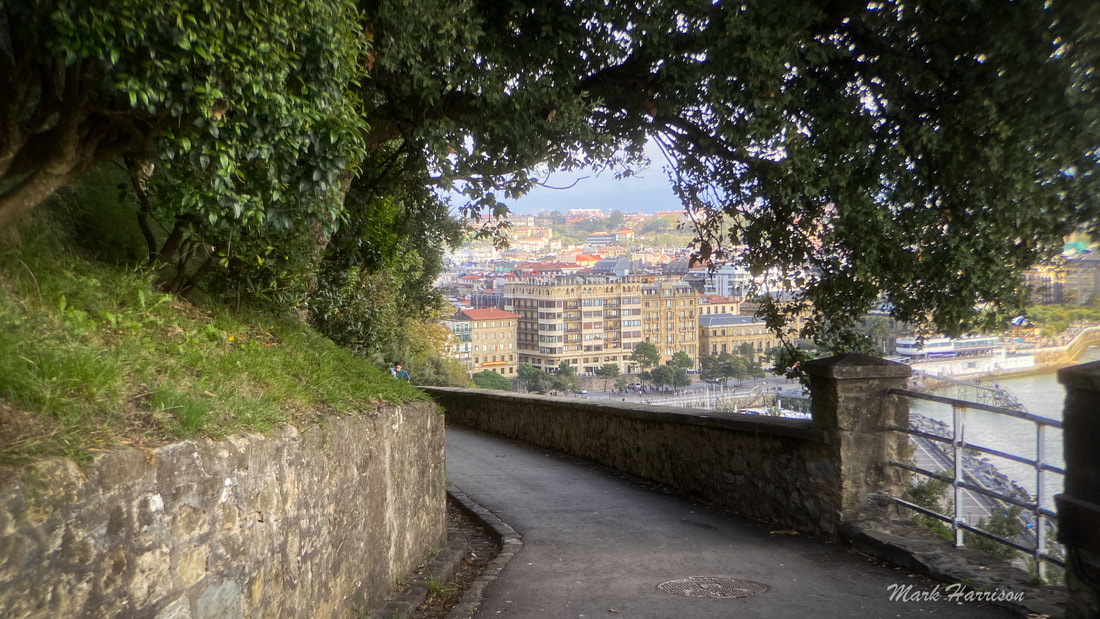
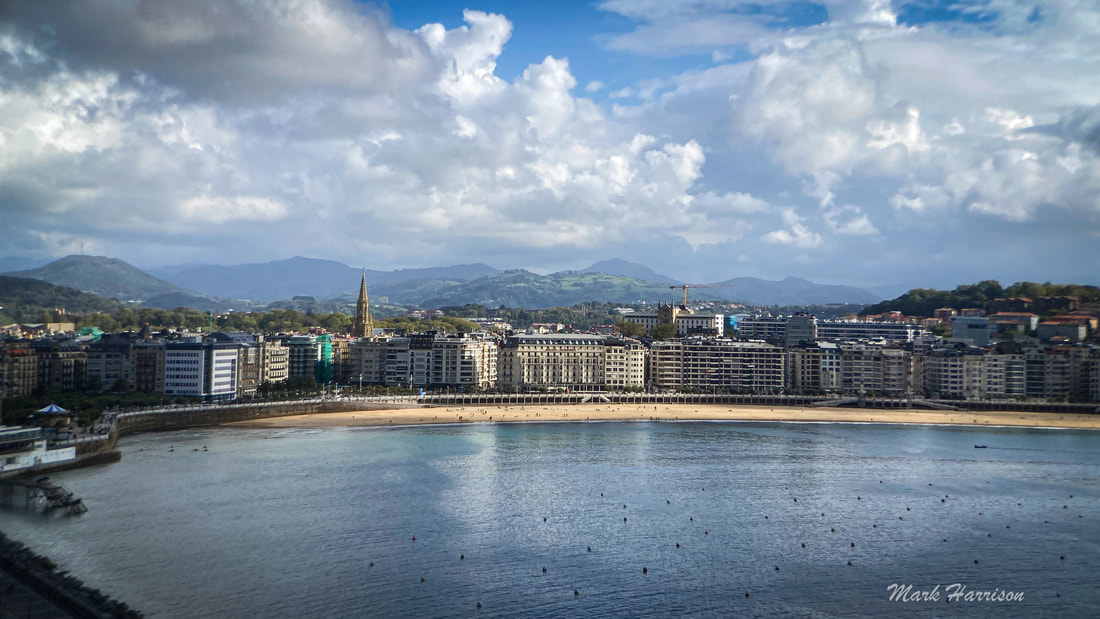
 RSS Feed
RSS Feed